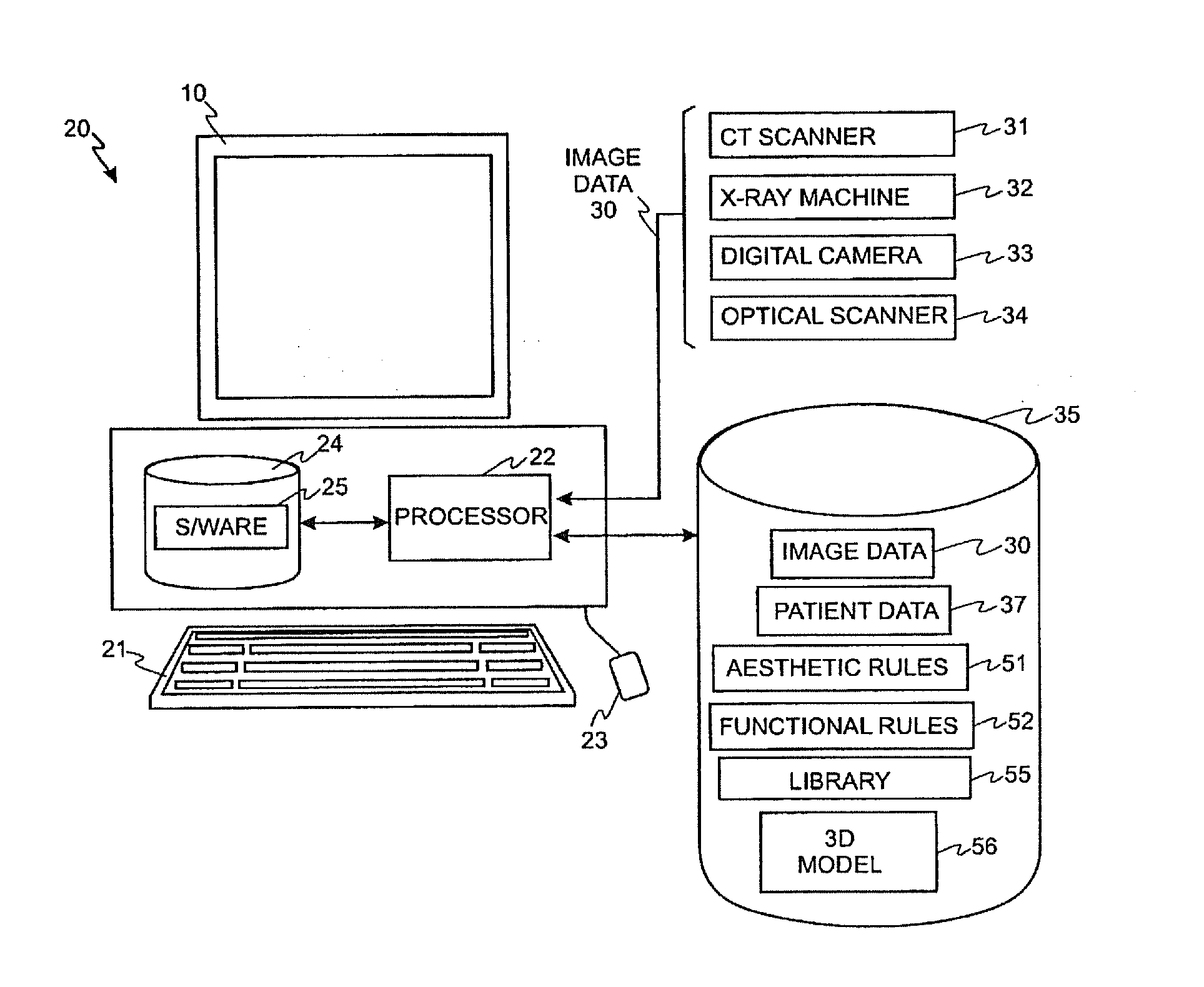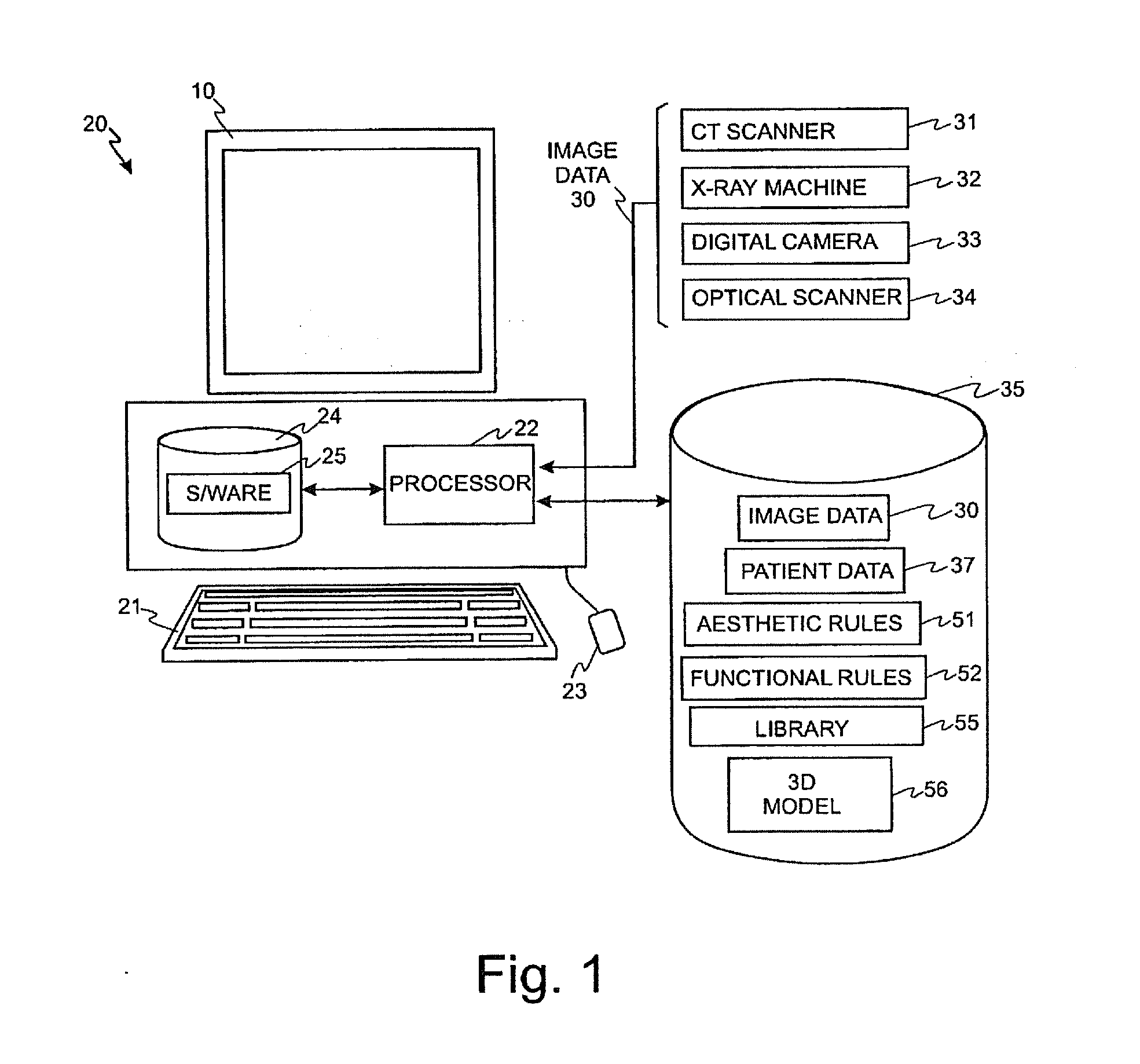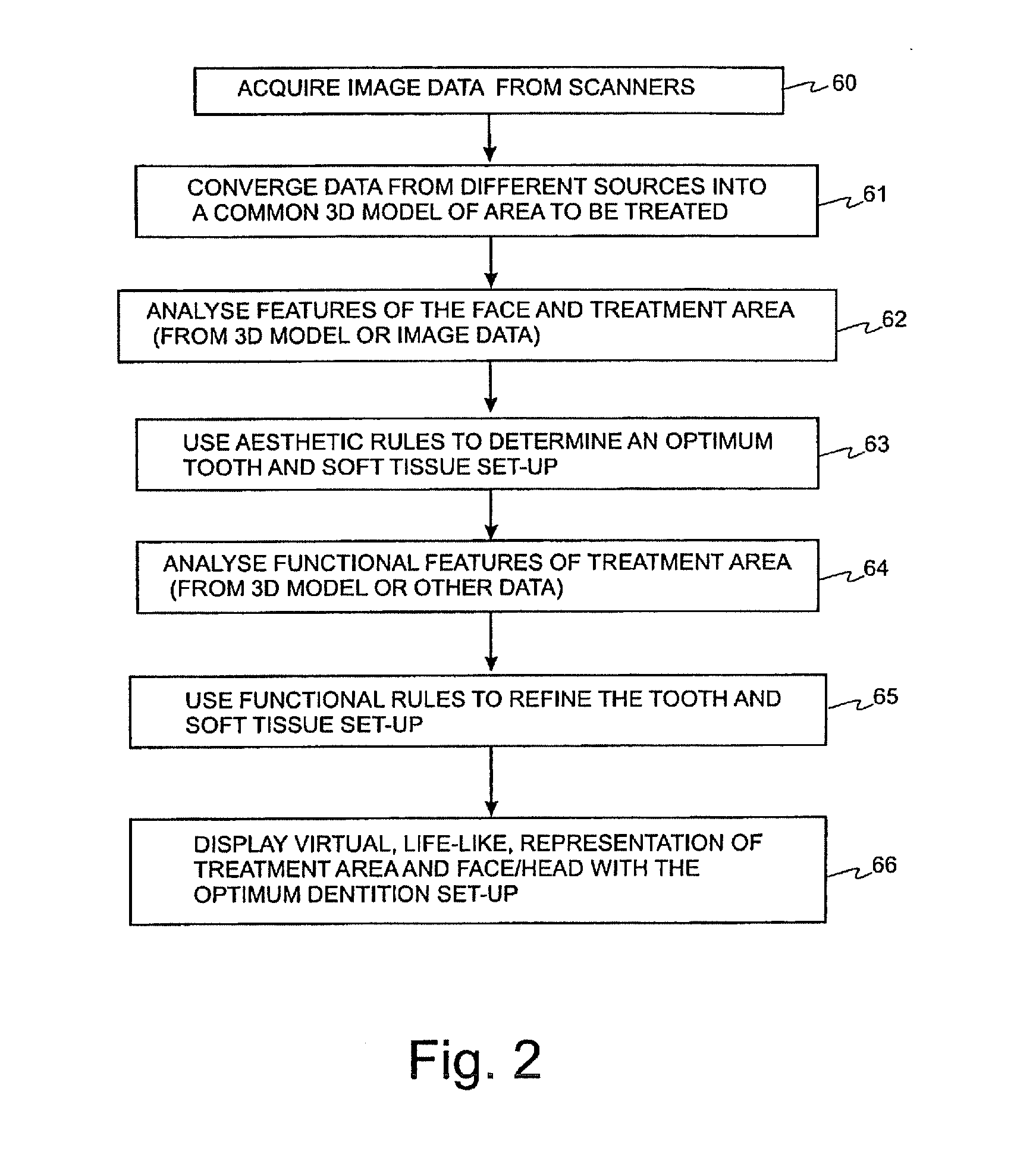Computer-assisted creation of a custom tooth set-up using facial analysis
a technology of facial analysis and computer assisted creation, applied in the field of computer assisted creation of custom tooth setup using facial analysis, can solve the problems of aesthetics that the implications of these alternatives are generally far from clear or in some cases ignored altogether, and achieve the effect of simplifying the process of creating the modified tooth
- Summary
- Abstract
- Description
- Claims
- Application Information
AI Technical Summary
Benefits of technology
Problems solved by technology
Method used
Image
Examples
example 1
[0064]A 3D photograph, or a set of 2D photographs, are taken of the face (while smiling) of a patient needing orthodontic treatment. Also, impressions of the patient's dentition are taken in alginate or silicon material. Using these impressions, plaster models of the intra-oral anatomy of the patient are manufactured. The plaster models are subsequently digitized using an optical scanner in order to yield a virtual 3D model that represents the dentition of the patient prior to treatment. In software, the virtual 31) model of the patient's dentition is registered onto the 3D photograph of the patient's face to create a life-like representation. The plaster casts contain the information of the gums and the 3D photograph contains the surface information of the patient's face. Computer-assisted facial and functional analyses are performed and the results of these analyses are used in a set of rules to establish an optimum dentition for the patient. Adapting position, inclination, and an...
example 2
[0065]A 2D photograph, a CT scan and impressions are taken of a partially edentulous patient needing a prosthetic reconstruction. A virtual, life-like, representation of the patient is created by mapping the 2D photograph onto the 3D soft tissue model of the patient's face generated from the CT images and registering the 3D models of the patient's dentition generated from μCT images of the impressions with the CT images of the patient's face. Replacement teeth are selected for the sites where the patient is currently missing teeth. The replacement teeth are selected by performing the facial / aesthetic analysis and following the aesthetical and functional rules, so as to match the shape of the remaining dentition of the patient. The software can select the replacement teeth automatically from a library of teeth, and place these in the virtual model of the patient's mouth, or the software can suggest a selection of suitable teeth on the basis of the aesthetical information and the rule...
example 3
[0066]A 3D photograph and impressions are taken of a fully edentulous patient. Scanning these impressions via μCT and performing image processing (segmentation, 3D model creation, surface inversion etc.) yields a digital representation of the intra-oral anatomy of the patient. Positioning the virtual 3D models of the patient's edentulous jaws relative to the 3D photograph using face bow measurements creates the virtual, life-like, representation. Then, an initial tooth set-up is created from library teeth by using statistical information (e.g. Staub pentagram, average shape of dental arch) as well as rules established by the computer assisted facial analysis. A computer-assisted functional analysis is performed for this initial diagnostic set-up taking into account patient specific parameters for setting the virtual articulator. The occlusal surfaces of these library teeth are optimized functionally to obtain optimal occlusion and articulation. The optimization process is iterated u...
PUM
 Login to View More
Login to View More Abstract
Description
Claims
Application Information
 Login to View More
Login to View More - R&D
- Intellectual Property
- Life Sciences
- Materials
- Tech Scout
- Unparalleled Data Quality
- Higher Quality Content
- 60% Fewer Hallucinations
Browse by: Latest US Patents, China's latest patents, Technical Efficacy Thesaurus, Application Domain, Technology Topic, Popular Technical Reports.
© 2025 PatSnap. All rights reserved.Legal|Privacy policy|Modern Slavery Act Transparency Statement|Sitemap|About US| Contact US: help@patsnap.com



